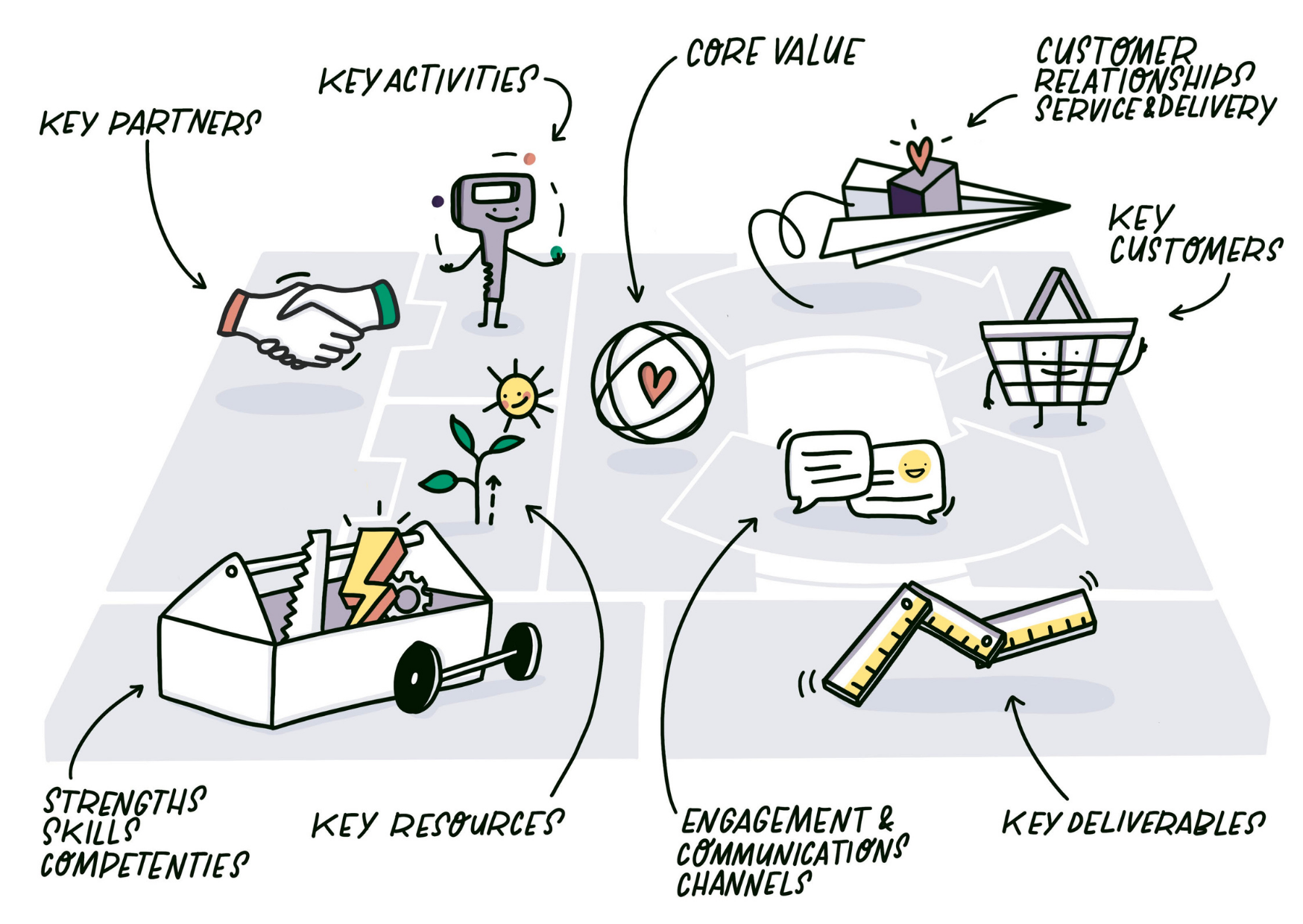You asked and we delivered!
There have been tons of questions surrounding the Job Canvas. Particularly at our Job Canvas launch, where people were very curious.
So we thought we would answer the top 10 questions we have received about the Job Canvas in this blog.
The Job Canvas is a digital upgrade to the job description. Developed to support modern, flexible working practises. The Job Canvas helps teams work with confidence and clarity and get the best out of themselves, their people and their jobs. You can find out more here.
1. What is the Job Canvas?
The Job Canvas makes describing and mapping out your role incredibly simple.
With a few clicks, you can capture precisely what your role entails, the value that you add to others, the people you support and the resources you need to work at your best.
Once done, you can simply export the Canvas into a PDF.
The Job Canvas is a great starting point for high quality conversations about your job, your career and your development.
2. What does the Job Canvas do?
The Job Canvas maps out your role using 9 essential elements, capturing key activities, stakeholders and customers.
On one page it provides a structured and clear way of presenting jobs which is easy to understand, customise, develop and review.
3. Who is the Job Canvas for?
Anyone can use the Job Canvas. It’s designed to be used by employees to reflect on the way they current do their jobs and to identify what is working well and what could be improved.
The Canvas is a great tool for team leaders to be able to understand and explore how their colleagues view their jobs and have positive performance and development conversations with them.
4. How long does it take to complete the Job Canvas?
In workshop we typically give people 2 minutes a section to complete. So this means that a draft job canvas can be completed in 18 minutes.
Typically it takes people around 30 minute to full and final job canvas.
5. Why do organisations currently use the Job Canvas?
Early adopters of the Job Canvas have wanted to use the Job Canvas to enable:
putting purpose, meaning and value at the heart of how people do their work
encouraging clearer coaching-focused conversations between leaders and their teams
enabling a personalised approach to working.
6. How can the Job Canvas benefit my team or organisation?
There are many (many) ways the Canvas can support your team or wider organisation.
Here are a top 3 for you:
Exceptional employee experience
The Job Canvas enables people to reflect upon their roles, identify the areas and ways that they add value, and ways that they can grow, adapt and craft their roles to suit their strengths.
Thriving Teams
When the Job Canvas is part of regular operations, it will highlight a team’s key processes, resources, and colleagues. By having access to this data, team leaders can effectively succession and contingency plan should key colleagues move on elsewhere or systems fail.
Organisational insights
The Job Canvas offers direct and real-time feedback about how people perform their work and the value they provide to the people they serve and support.
7. Can I see and analyse the data from the different Job Canvases people complete within my organisation?
Data from each individual Job Canvas can be collated and downloaded in various formats (e.g. a CSV file). This can then be viewed, searched and analysed using software such as Google Sheets or Microsoft Excel or integrated with other applications (e.g. Microsoft Power BI) to provide wider people analytics.
This can create insights about the job roles across a team or organisation (e.g. who are the key customers of certain individuals or teams and what resources do they need to be successful).
8. Can the Job Canvas support Goal / OKR setting, appraisals and performance check-ins?
The Job Canvas is a great tool to use as part of any conversations focussed around how people currently do their jobs and how they might personally develop themselves and their work in the future.
It is therefore a perfect compliment to goal / OKR setting, appraisals and performance check-ins.
9. Is the Job Canvas free to use?
The standard Job Canvas is free to use by individuals, teams and organisations. We want people to use it, share it and build upon it.
There is an investment cost for organisations who want to customise the Job Canvas (see question below) and use it commercially.
The standard Job Canvas is released under an Attribution-Non-Commercial-ShareAlike license. Users are free to use, copy and build upon the existing Job Canvas, but must give full identification and credit to Tailored Thinking.
The Job Canvas cannot be use for commercial purposes without consent from Tailored Thinking (just get in touch with us if you want to do this at [email protected]).
10. I want to produce a customised Canvas for my organisation - what is the investment cost and price?
A customised (e.g. reflect their brand colours), be able to view the Canvases that have been created within their organisation, and be able to analyse and download the content of the Job Canvas.
To discuss the costs of producing a customised Job Canvas then please contact us directly at [email protected]
Want to know more?
We hope that has helped clarify some of your first questions about the Job Canvas. If not, please do not hesitate to ask! You can message us on social media or email us at [email protected].
Remember, there is no such thing as a stupid question.

























